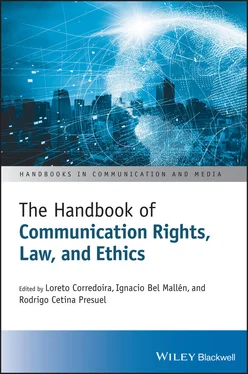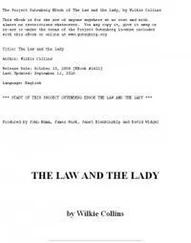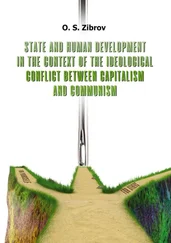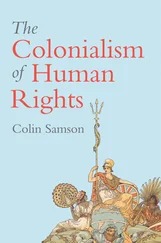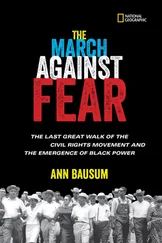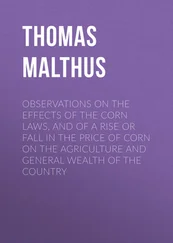1 ...7 8 9 11 12 13 ...29 The Virginia Declaration establishes, for example, separation of powers (principally executive and legislative powers); it affirms the equality of men; it proclaims, for the first time, the primacy of civilian power over military power; and it establishes the right to justice and freedom of religion. Its Article 12 affirms that “freedom of the press is one of the great bulwarks of freedom and cannot be restrained by a despotic government.”
This is the first great declaration related to freedom of communication, in this case, freedom of the press.
Jefferson drew heavily from the Virginia Declaration to draft the US Declaration of Independence, and the content of the Virginia Declaration was reaffirmed by the US Constitution, together with its amendments. From the perspective of freedom of expression, the most important amendment is the first one. It was proposed on September 25, 1789, and enacted on December 13, 1791. The First Amendment establishes that:
Congress shall make no law respecting an establishment of religion, or prohibiting the free exercise thereof; or abridging the freedom of speech, or of the press; or the right of the people peaceably to assemble, and to petition the Government for a redress of grievances.
In the European context, it is necessary to mention the Declaration of the Rights of Man and of the Citizen (1789), published in France, where Jefferson was serving as US ambassador at the time. This declaration clearly paved the way for the concept of fundamental rights of the citizen, and it enumerates which rights should be considered essential. A good example is the first article, which affirms that “men are born and remain free and with equal rights” – a wording quite similar to the first article of the UDHR – and that men are “endowed with reason and conscience, [and] should behave fraternally towards one another.”
The French declaration continues by speaking of political rights (national sovereignty, representative government, primacy of the law, and separation of powers) as well as of individual rights (resistance to oppression, presumption of innocence, and the right to property). Two articles on individual rights stand out from the perspective of information law and ethics. Article 10 states that “no one may be disturbed for his opinions, even religious ones, provided that their manifestation does not trouble the public order established by the law.” The phrase “no one may be disturbed” is echoed by the UDHR’s wording of “no one shall be subjected to arbitrary interference.” Article 11 states that:
The free communication of thoughts and of opinions is one of the most precious rights of man: any citizen thus may speak, write, print freely, except to respond to the abuse of this liberty, in the cases determined by the law.
In the twentieth century, in the wake of the trauma of World War II, the UN Declaration (1942) was a notable achievement. In this document, 26 states declared themselves unified in conflict against the Axis powers and committed to remaining united after the conflict in order to found an international organization whose mission would be to promote peace in the world. This agreement led to the UN Charter (1945), which created the conditions for the UDHR (1948), the final step in the long journey to establishing the primacy of human rights in the face of tyranny and abuse of the law. This was the culmination of a long process of searching for and formulating fundamental rights that would allow society to improve human dignity following all the violence of the twentieth century, primarily because of the two world wars that occurred between 1914 and 1945. The fundamental idea behind the UDHR was to establish major human rights that would impede the violations of human dignity witnessed in the twentieth century.
This is the meaning of the UDHR, which brings together the principal fundamental rights that, at the time, constituted the essence of human dignity. The declaration had a clear ethical force, even if it was not legally binding. The importance of its contents and the moral force of the rights declared therein led it to influence legislation adopted by the UN’s member states. This legislation may have differed somewhat from state to state, but its purpose in all cases was to promote human rights within each country.
One of those rights, which was doubtless quite important given the rapid development of media at the time, was the right to freedom of expression, which, until that point, had been the focus of the fight for the right to freely express opinions and ideas. It was time – and this is also the perception from the declaration – to move from fighting for freedom of expression, as people had in centuries past, toward turning that freedom into a fundamental right. The moment was propitious to grant expression free of government interference as an essential part of society, the status of fundamental right. In this way, the universal right to freedom of expression emerged.
Article 19 of the declaration states, “Everyone has the right to freedom of opinion and expression; this right includes freedom to hold opinions without interference and to seek, receive and impart information and ideas through any media and regardless of frontiers.” This article establishes the basis for communication rights, the right to communication for all citizens of the world through universality of subject, medium, content, and geographic location. The development of this right was a significant achievement. It amounted to a qualitative leap that allowed the creation of communication rights as a human right that should be respected and protected by the state.
This leap would gradually become more effective as national legislatures incorporated the UDHR’s principles into their own laws and constitutions. Indeed, the goal of the declaration was to serve as the ethical and legal source for the development of national and supranational legal instruments that would make communication rights fundamental.
International Agreements on Human Rights: The International Covenant on Civil and Political Rights
The UDHR is one of several universal declarations and international agreements that aim to strengthen the existence of human rights in various fields of endeavor. Just within the realm of communication, which is the focus of this volume, two agreements followed the UDHR: the International Covenant on Civil and Political Rights and the International Covenant on Economic, Social and Cultural Rights. These declarations were adopted by the UN General Assembly in its Resolution 2200 on December 16, 1966, when the agreements were opened for ratification by member states. The agreements ultimately entered into force on March 23, 1976.
One of the disadvantages of the UDHR is its nonbinding nature in relation to the national legislation of member states. From the start, it was more an ethical declaration; it was important, but did not have legal weight because it could not be enforced. The Human Rights Committee, as Subedi (2017) points out, has a certain moral authority, but it is not a guarantor. Following the first announcement of the UDHR, many set about translating its contents into a unified international treaty in order to give it full legal backing. This would not be achieved until 18 years later, with the approval of the International Covenant on Civil and Political Rights in 1966.
Initially, the idea was to create a single treaty that reflected the unitary, indivisible character of the human rights enumerated in the UDHR. However, confrontations among the UN member states, which were divided into classical capitalist and Marxist camps, necessitated the splitting of the rights into two covenants in 1948. The first agreement, which was ratified by a larger number of UN member states, deals with civil and political rights and establishes oversight and monitoring mechanisms for ensuring its implementation. The second agreement, covering economic and social rights, is more general and does not stipulate adequate monitoring mechanisms.
Читать дальше
